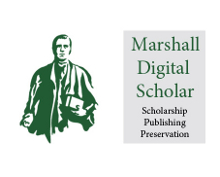DOI
https://dx.doi.org/10.18590/euscorpius.2019.vol2019.iss276.1
Abstract
Nine species of scorpions belonging to two families are reported from the Alborz, Markazi and Tehran Provinces of Iran. Of these, Compsobuthus kaftani Kovařík, 2003 is recorded from Tehran Province for the first time; Compsobuthus matthiesseni (Birula, 1905) is recorded from Alborz Province for the first time; Hottentotta saulcyi (Simon, 1880) is recorded for Alborz and Markazi Provinces for the first time; Iranobuthus krali Kovařík, 1997 is recorded for Tehran Province for the first time; Mesobuthus eupeus eupeus (C. L. Koch, 1839) is recorded from Alborz, Markazi and Tehran Provinces for the first time; Odontobuthus doriae (Thorell, 1876) is recorded from Alborz Province for the first time; and Scorpio kruglovi Birula, 1910 is recorded for Alborz and Markazi Provinces for the first time. Orthochirus carinatus sp. n. from Iran (Alborz and Tehran Provinces) is described and fully complemented with color photos of preserved specimens, as well as of its habitat.
References with DOI
AMR Z. S., ABED O. A., AL SHARE T., HAMIDAN N. & PRENDINI L., 2015. New records of Jordanian scorpions. Jordan Journal of Natural History, 2: 30–38.
AZGHADI, S., O. MIRSHAMSI, S. NAVIDPOUR & M. ALIABADIAN. 2014. Scorpions of the genus Odontobuthus Vachon, 1950 (Scorpiones: Buthidae) from Iran: Phylogenetic relationship inferred from mitochondrial DNA sequence data. Zoology in the Middle East, 60 (2): 169–179. https://doi.org/10.1080/09397140.2014.914747
BIRULA, A. A. 1905. Beiträge zur Kenntniss der Scorpionenfauna Persiens (Dritter Beiträge). Bulletin de l´Académie Impériale des Sciences de St.- Pétersbourg, 23: 119–148.
OLIVIER, G. A. 1807. Voyage dans l`Empire Othoman, l`Égypte et la Perse. Henri Agasse, Paris, Vol. 3: 96–97, fig. 2.
SADÍLEK, D., P. NGUYEN, H. KOÇ, F. KOVAŘÍK, E. A. YAĞMUR & F. ŠŤÁHLAVSKÝ. 2015. Molecular cytogenetics of the Androctonus scorpions: an oasis of calm in turbulent karyotype evolution of the diverse family Buthidae. Biological Journal of the Linnean Society, 115: 69–76. https://doi.org/10.1111/bij.12488
SAMPOUR, M. 2012. Morphological studies of sensitive seta of scorpions and distribution of scorpions (Arachnida: Scorpiones) in Luristan, Iran. Journal of Experimental Zoology, 15(2): 413–419.
SIMON, E. 1880a. Études Arachnologiques 12e Mémoire. Part XVIII. Descriptions de Genres et Espéces de l`orde des Scorpiones. Annales de la Sociéte Entomologique de France, 5(10)1880: 377–398.
SIMON, E. 1880b. Quelques scorpions qui lui ont été donnés par notre confrére M. Reiche, de la part de M. F. de Saulcy, qui les a recus de Mossoul (ancienne Ninive), sur le Tigre, en Mésopotamie. Annales de la Sociéte Entomologique de France, 5(10): 29.
ŠŤÁHLAVSKÝ, F., H. KOÇ & E. A. YAĞMUR. 2014. The first record of karyotypes in Leiurus abdullahbayrami and Compsobuthus matthiesseni (Scorpiones: Buthidae) from Turkey. Northwestern Journal of Zoology, 10 (2): 355–358.
THORELL, T. 1876. Études scorpiologiques. Atti della Societá Italiana di Scienze Naturali, 19: 75–272.
VACHON, M. 1974. Étude des caractères utilisés pour classer les familles et les genres de Scorpions (Arachnides). 1. La trichobothriotaxie en Arachnologie, Sigles trichobothriaux et types de trichobothriotaxie chez les Scorpions. Bulletin du Muséum National d´Histoire Naturelle Paris, 140: 857– 958.
VIGNOLI, V., F. KOVAŘÍK & P. CRUCITTI. 2003. Scorpiofauna of Kashan (Esfahan Province, Iran) (Arachnida: Scorpiones). Euscorpius, 9: 1–7. https://doi.org/10.18590/euscorpius.2003.vol2003.iss9.1
Recommended Citation
Navidpour, S., Kovařík, F., Soleglad, M., & Fet, V. 2019 . Scorpions of Iran (Arachnida, Scorpiones). Part X. Alborz, Markazi and Tehran Provinces with a description of Orthochirus carinatus sp. n. (Buthidae). Euscorpius, No. 276: 1-20.
